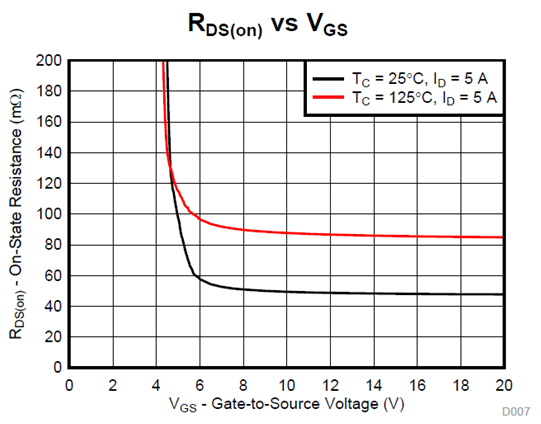Tool/software:
Hi Team
As shown in the figure below, CSD19538Q3A SPEC only provides the change of RDS(on) to VGS when ID = 5A.

However, since the customer is applying this MOSFET to TI PoE solution, the maximum current value does not exceed 1A.
I would like to ask you to help provide the RDS(on) vs. VGS characteristic curve of the MOSFET CSD19538Q3A when ID = 1A.
If you have other temperature curves, please provide them to me. This information is very important to customers.
Thanks,
Boyan

